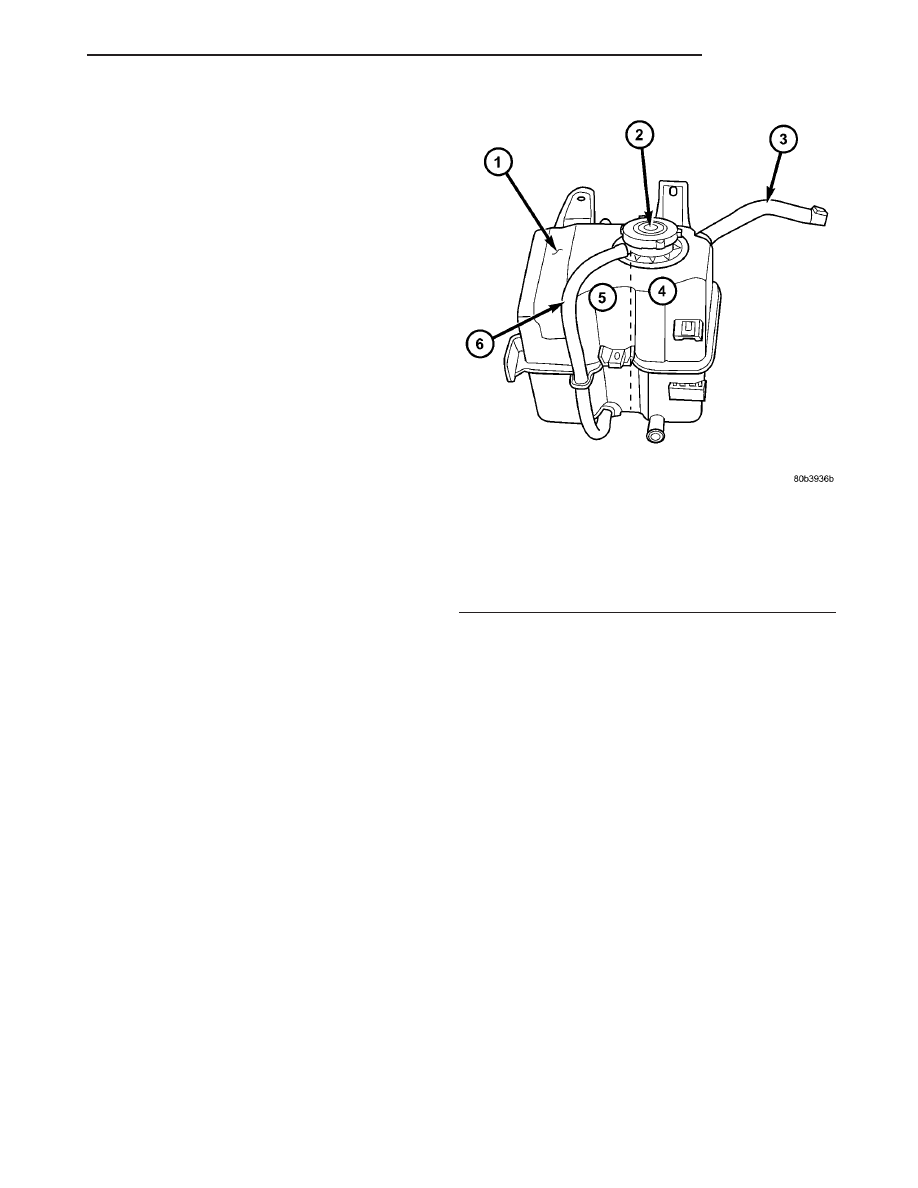Chrysler Sebring, Stratus sedan, Sebring Convertible. Manual - part 309

(4) Disconnect the overflow hose from coolant out-
let connector.
(5) Remove coolant recovery container screws.
(6) Remove coolant recovery container.
INSTALLATION
(1) Install container in mounting position and
install attaching screws.
(2) Connect the overflow hose to the coolant outlet
connector.
(3) Snap the washer hose into groove on coolant
recovery container.
(4) Install
the
air
conditioning
receiver/dryer
attaching screw.
(5) Install the power steering reservoir attaching
screw.
(6) Fill cooling system (Refer to 7 - COOLING/EN-
GINE - STANDARD PROCEDURE).
COOLANT PRESSURE
CONTAINER - 2.7L
DESCRIPTION
The coolant pressure container consists of a pres-
sure chamber and a overflow chamber (Fig. 14). The
coolant pressure container is mounted in the right
side engine compartment. An overflow hose connects
the pressure chamber to the overflow chamber.
NOTE: Coolant will normally be in the pressure
chamber side of the coolant bottle. The overflow
chamber should normally be empty
OPERATION
The pressure chamber keeps the coolant free of
trapped air, provides a volume for expansion and con-
traction, and provides a convenient and safe method
for checking and adjusting coolant level at atmo-
spheric pressure. It also provides some reserve cool-
ant to cover minor leaks, evaporation or boiling
losses. The overflow chamber allows coolant recovery
in case of an overheat.
REMOVAL
(1) Drain coolant below the coolant pressure con-
tainer level.
(2) Remove the power steering reservoir attaching
screw.
(3) Remove
the
air
conditioning
receiver/dryer
attaching screw.
(4) Unsnap washer hose from the bottle.
(5) Disconnect the hose from coolant outlet connec-
tor to the bottle.
(6) Remove pressure container attaching screws.
(7) Reposition pressure container and disconnect
the heater hose at the container.
(8) Remove coolant pressure container.
INSTALLATION
(1) Connect heater hose to coolant pressure con-
tainer.
(2) Install container in mounting position and
install attaching screws.
(3) Connect the coolant outlet connector hose to
the bottle.
(4) Snap washer hose into groove on coolant pres-
sure container.
(5) Install
the
air
conditioning
receiver/dryer
attaching screw.
(6) Install the power steering reservoir attaching
screw.
(7) Fill cooling system (Refer to 7 - COOLING/EN-
GINE - STANDARD PROCEDURE).
Fig. 14 Coolant Pressure Container - 2.7L
1 - COOLANT PRESSURE CONTAINER
2 - COOLANT PRESSURE CAP
3 - HOSE TO COOLANT OUTLET CONNECTOR
4 - PRESSURE CHAMBER
5 - OVERFLOW CHAMBER
6 - OVERFLOW HOSE
JR
ENGINE
7 - 29
COOLANT RECOVERY CONTAINER - 2.0L/2.4L (Continued)